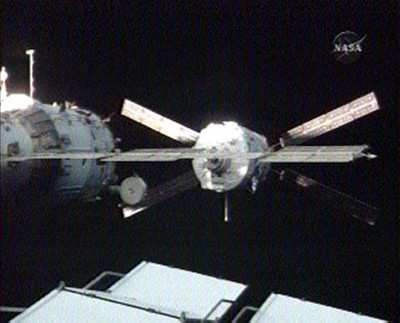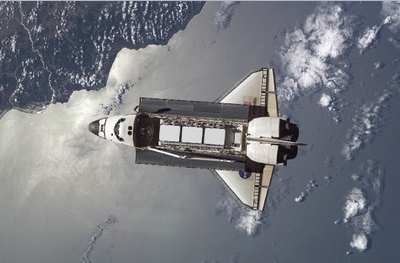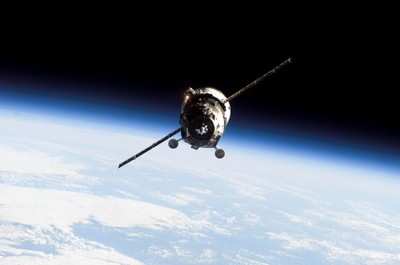Address Future Spacecraft Needs Following Shuttle
Retirement
The heads of the International Space Station (ISS) agencies from
Canada, Europe, Japan, Russia and the United States met at European
Space Agency (ESA) Headquarters in Paris on Thursday, to review
their cooperation agreements on the massive orbital structure.

As part of their discussions, they noted the significantly
expanded capability that the ISS now provides for on-orbit research
and technology development activities and as an engineering test
bed for flight systems and operations that are critical to future
space exploration initiatives. These activities improve the quality
of life on Earth by expanding the frontiers of human knowledge.
The Heads of Agency also noted significant accomplishments since
their last meeting in January 2007, including the delivery of Node
2 (Harmony), two new laboratories (the ESA Columbus Module and the
Japanese Experiment Module Kibo), and Dextre, Canada's two-armed
special purpose dexterous manipulator. In addition to the
completion of six challenging ISS assembly missions with the US
Space Shuttle, the Heads of Agency recognized the maiden flight of
the European Automated Transfer Vehicle, the establishment of the
global ISS ground operation control center network with the
addition of new European and Japanese ISS operations centers and
the successful flights of Russian Soyuz and Progress vehicles. The
Partners emphasized the critical importance of expanded operations
of Russian Soyuz and Progress vehicles for ISS total crew
transportation, rescue and cargo delivery.

The Heads of Agency also reviewed current ISS development,
configuration and operations activities across the partnership.
They considered implementing plans to maximize the benefits from
the increase to a six-person crew in 2009 and discussed efforts to
ensure that essential space transportation capabilities (both crew
and cargo) will be available across the partnership for the life of
the program. The Partners acknowledged the need for the additional
Russian modules to be provided in 2009 and 2010 that will maximize
six-person ISS operations and utilization.
The five agencies also discussed their respective ongoing
activities to enhance upmass and downmass transportation
capabilities required for a robust utilization of the ISS and for
preparing capabilities for the future, in the face of the looming
retirement of the shuttle in 2010. These include Japan's H-2
Transfer Vehicle in the next year, the US Commercial Orbital
Transportation Services and the US Orion Crew Exploration Vehicle;
current operational vehicles include the shuttle, Russia's Soyuz
and Progress spacecraft, and ESA Automated Transfer Vehicle.

These capabilities will respond to the ISS operations and
utilization requirements. They also noted new initiatives such as
the ESA plan for an Automated Transfer Vehicle-Advanced Return
Vehicle system for downmass from the ISS and the Russia-ESA joint
preparatory activities on an advanced Crew Space Transportation
System. The Heads of Agency expressed their interest in making
these capacities available for the benefit of the whole partnership
and can provide sustainability of the ISS and prepare for future
exploration endeavors.

As the partnership moves closer to completion of ISS assembly,
the Heads of Agency reaffirmed their common interest in utilizing
the space station to its full capacity for a period meaningful for
stakeholders and users. The Partners noted that a continuation of
operations beyond 2015 would not be precluded by any significant
technical challenges. Recognizing the substantial programmatic
benefits to continued ISS operations and utilization beyond the
current planning horizon, the Heads of Agency committed to work
with their respective governments to assess support for such a
goal.
 ANN's Daily Aero-Term (04.24.24): Runway Lead-in Light System
ANN's Daily Aero-Term (04.24.24): Runway Lead-in Light System ANN's Daily Aero-Linx (04.24.24)
ANN's Daily Aero-Linx (04.24.24) Aero-FAQ: Dave Juwel's Aviation Marketing Stories -- ITBOA BNITBOB
Aero-FAQ: Dave Juwel's Aviation Marketing Stories -- ITBOA BNITBOB Classic Aero-TV: Best Seat in The House -- 'Inside' The AeroShell Aerobatic Team
Classic Aero-TV: Best Seat in The House -- 'Inside' The AeroShell Aerobatic Team Airborne Affordable Flyers 04.18.24: CarbonCub UL, Fisher, Affordable Flyer Expo
Airborne Affordable Flyers 04.18.24: CarbonCub UL, Fisher, Affordable Flyer Expo






